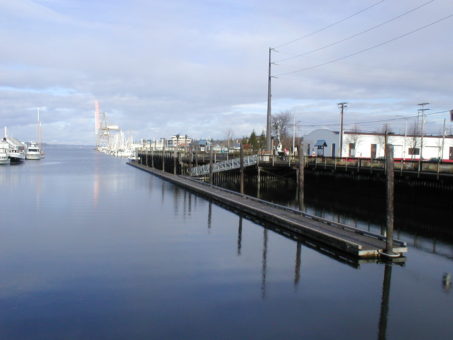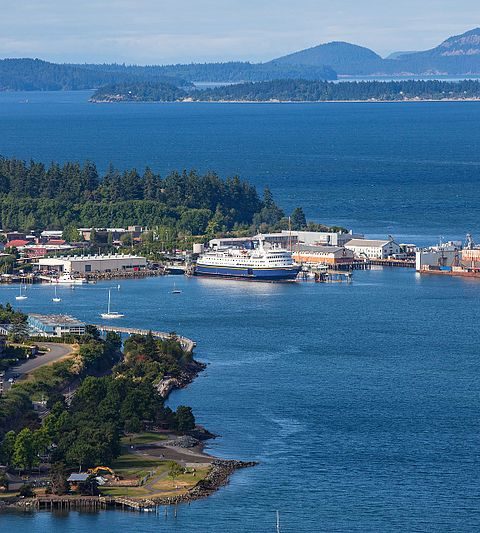Vancouver, Wash. – Maul Foster & Alongi, Inc. (MFA), a leading Pacific Northwest multidisciplinary firm, is excited to announce the acquisition of Peak Sustainability Group, a respected Bellingham, Washington-based firm specializing in climate change and sustainability services. The acquisition of Peak reflects MFA’s ongoing commitment to environmental stewardship and sustainable business practices. This partnership enables MFA…
Climate Change Impacts Seaports

Seaports are most vulnerable to climate change disruption
As the world continues to experience the effects of climate change, it’s important to consider how different industries will be impacted. One industry that is often overlooked is the shipping industry. Seaports are a vital part of the shipping industry, and they are already feeling the effects of climate change. Transport facilities, such as seaports, airports, and roads, are significantly affected by climate change. Seaports are vulnerable to sea level rise, storm surges, changing wind patterns, and powerful storms. Here’s a closer look at how climate change is impacting seaports and what steps can be taken to mitigate the damage.
Rising Seas and Flooding
One of the most immediate threats to seaports is rising sea levels. A rise in sea level of just a few inches can have a major impact on coastal areas, as it increases the risk of flooding and storm surges. In fact, flooding has already begun to impact some seaports. For example, the Port of Virginia experienced significant flooding in 2018 due to a combination of high tides and heavy rains. As sea levels continue to rise, this type of flooding will become more common.
Another major threat posed by rising sea levels is erosion. Erosion occurs when waves and currents wash away sand and other materials from the shoreline. This can have a devastating impact on seaports, as it can destroy infrastructure and impede shipping traffic. Erosion is already occurring at many seaports around the world as a result of increasing storm intensity and frequency.
Economic Risk and Cost from Storms
Supply chains are interconnected, so damage to infrastructure and disruptions/delays due to climate-related events worldwide can be extensive. Consider the following:
- Weather-related disasters in 2017 caused damages and losses of up to US$ 320 billion.
- Damage from Hurricane Dorian in 2019 for the Bahamas (mostly to infrastructure) alone was estimated at US$ 3.4 billion.
- Hurricane Sandy in 2012 caused over US$ 62 billion in losses
- A recent study estimates that the total value of assets exposed to episodic coastal flooding by 2100 could increase to 12 – 20 % of global GDP.
Increasing Temperatures Impact Port Infrastructure
In addition to rising seas, rising temperatures are having an impact on seaports. For instance, higher temperatures can cause asphalt pavements at seaports to soften, making them more susceptible to damage from heavy trucks and other vehicles. High humidity is also a heat-related risk for workers.
Extreme Heat Impacts Labor
Beyond heat-related illnesses, there’s growing evidence about the impacts of extreme heat on accident risk and resulting traumatic injuries. Dangerous job tasks, such as operating heavy equipment and balancing on ladders, are getting more dangerous. The way work structure—details like incentives and breaks—interacts with heat extremes is another pressing risk.
When there is no escape from the heat and goods are piling up at ports, workers are impacted. “Even moderate physical exertion is lethal,” states the article. Workers from vulnerable groups are also more likely to be exposed to climate extremes at work. Weather can cancel work as well and “Many low-wage outdoor laborers also don’t have access to the same healthcare resources as higher-income populations.” Also, socio-economically disadvantaged areas near port operations are often impacted the most and lack advocacy and resources to fix the situation.
How Can Seaports Mitigate for Climate Change?
Fortunately, there are steps that can be taken to mitigate the effects of climate change on seaports.
- One such step is constructing breakwaters, which are walls that are built out into the water near the shoreline in order to protect against erosion.
- Another mitigation measure that can be taken is building raised walkways and docks, which will help protect against flooding.
- Finally, planting vegetation can help stabilize soil and protect against erosion.
How Can Seaports Plan for Climate Change?
Seaports must enhance their climate resilience. Other critical transport infrastructure should do the same since they are an interdependent network. The UNCTAD article poses the following planning strategies.
- Effective adaptation requires ‘fit-for-purpose’ risk assessment procedures (at local and facility levels).
- Bridge potential data and knowledge gaps.
- Develop technical and management solutions that reduce vulnerability.
- Adopt decision-making that can operate coherently amidst uncertainty.
- Provide funding, technology, and capacity-building to small and large ports.
- Coordinate policy responses and supportive legal and regulatory approaches.
- Invest in energy efficiency, decarbonization, and renewables.
- Aim for synergy and policy coherence in efforts at post-pandemic recovery.
- Adopt systemic, integrated approaches to adaptation and resilience-building across the network.
- Address the transport impacts on the most vulnerable communities.
- Investments in climate resilience make good economic sense. Each dollar invested, has a $4 benefit.
The Economy Depends on a Well-Functioning Transport Network
As climate change continues to impact the world around us, it’s important to consider how different industries will be affected. The shipping industry is one such industry that is often overlooked but is already feeling the effects of climate change through its network of seaports. Rising seas and increased temperatures are just some of the ways in which climate change is impacting seaports around the world. But there are steps that can be taken to mitigate the damage, such as constructing breakwaters and planting vegetation. It’s important that ports and associated rail, maritime, and air components of the inter-related transport network take these steps now in order to protect our seaports.
Growing Threat to Sustainable Trade
A United Nations Conference on Trade and Development (UNCTAD) article from June 2021 outlines the growing threat to sustainable trade and development. They acknowledge there is no single approach to climate change adaptation and resilience planning for ports. With the pandemic and the instability it produced in our supply chains, we can see how interconnected our world has become.
No Time to Lose
“There is no time to lose and ‘all hands on deck’ are needed. In the absence of timely planning and implementation of requisite adaptation measures, the projected impacts on seaports may have broad economic and trade-related repercussions and may severely compromise the sustainable development prospects of the most vulnerable groups of countries, such as SIDS. Given what is at stake and the potential costs of inaction, prevention and mitigation of climate change impacts on ports – and other key transport infrastructure should become a major priority as part of sustainable development and climate strategies.”
The concern over climate change must be transformed into action. Climate planning should be budgeted for all ports and should include adaptation and mitigation. Climate change is here. Time is of the essence.

















